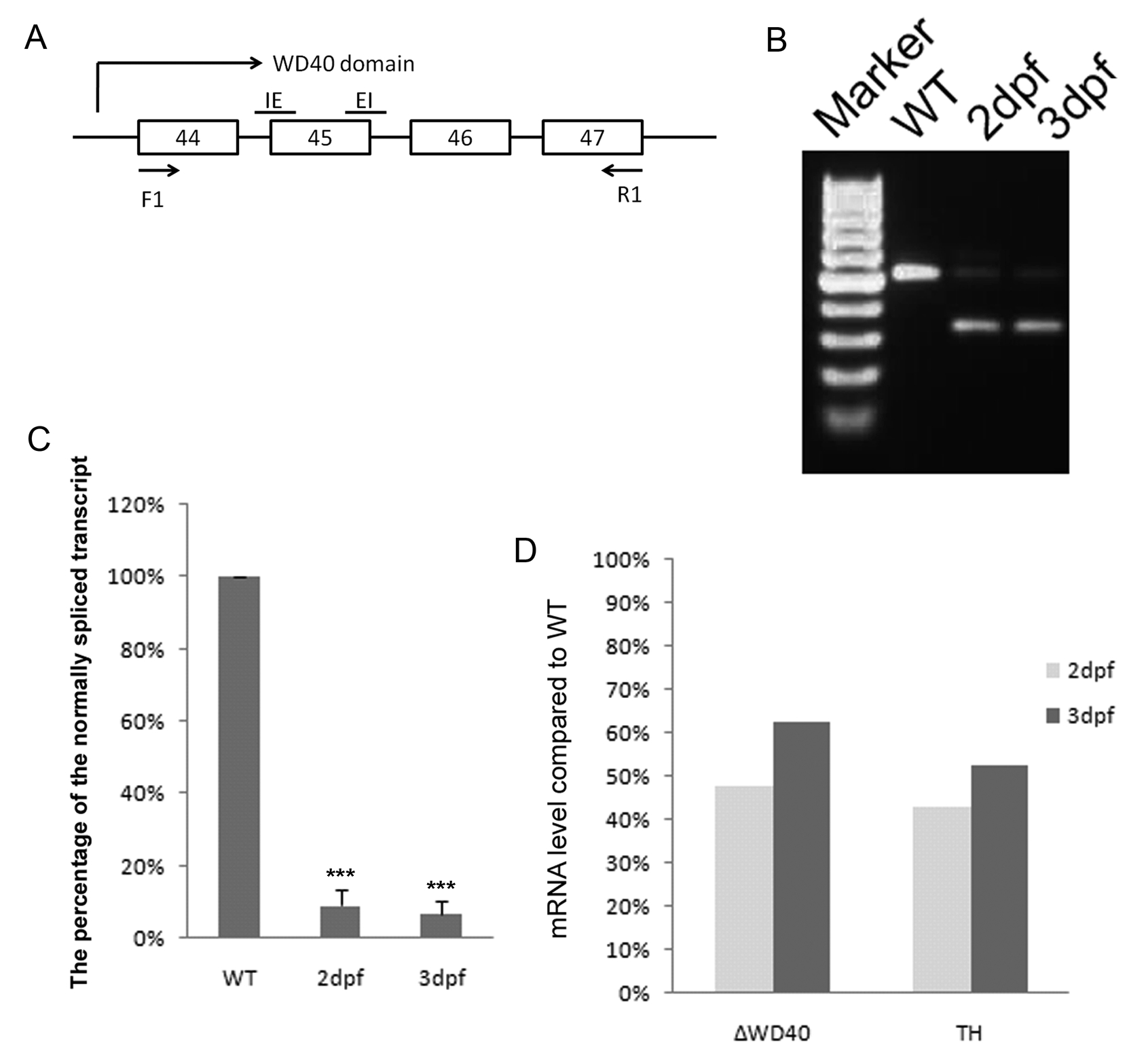Fig. S5 RT-PCR Analysis to confirm the blockage of exon 45 splicing by WD40 morpholino. (A) Schematic representation of the exons 44 to 47 of zLRRK2 to show the morpholinos used for blocking the 45th exon splicing (the track above the exons) as well as the primers (the track below the exons) used in the RT-PCR verification of the splicing blockage effect at 2 dpf and 3 dpf. (B) RT-PCR analysis at 2 and 3 dpf showing that the WD40 morpholino could block the splicing of exon 45, and the major of transcripts were the abnormally spliced one without exon 45 (confirmed by sequence analysis). (C) The percentage of the normally spliced transcript in the total amount of normal and abnormally spliced (without exon 45) transcripts in WT and WD40 morphant at 2 and 3 dpf. The densities of normal and abnormal spliced transcripts (in B) at 2 and 3 dpf were measured, and the percentage of normally spliced transcript was calculated by comparing the density of normal transcript to the total density of both normal and abnormal transcripts (sum of density from normal and abnormal forms). The percentage is presented as mean ± SD from 4 independent experiments. In wild-type embryos, no abnormal splicing forms were detected. ***P<0.001 (unpaired Student′s t-test). (D) Quantitative RT-PCR analysis of wild-type controls and WD40 morphants at 2 and 3 dpf, showing that both TH and WT zLRRK2 mRNA levels were reduced to 40%?60% of WT fishes.
Image
Figure Caption
Acknowledgments
This image is the copyrighted work of the attributed author or publisher, and
ZFIN has permission only to display this image to its users.
Additional permissions should be obtained from the applicable author or publisher of the image.
Full text @ PLoS Genet.

